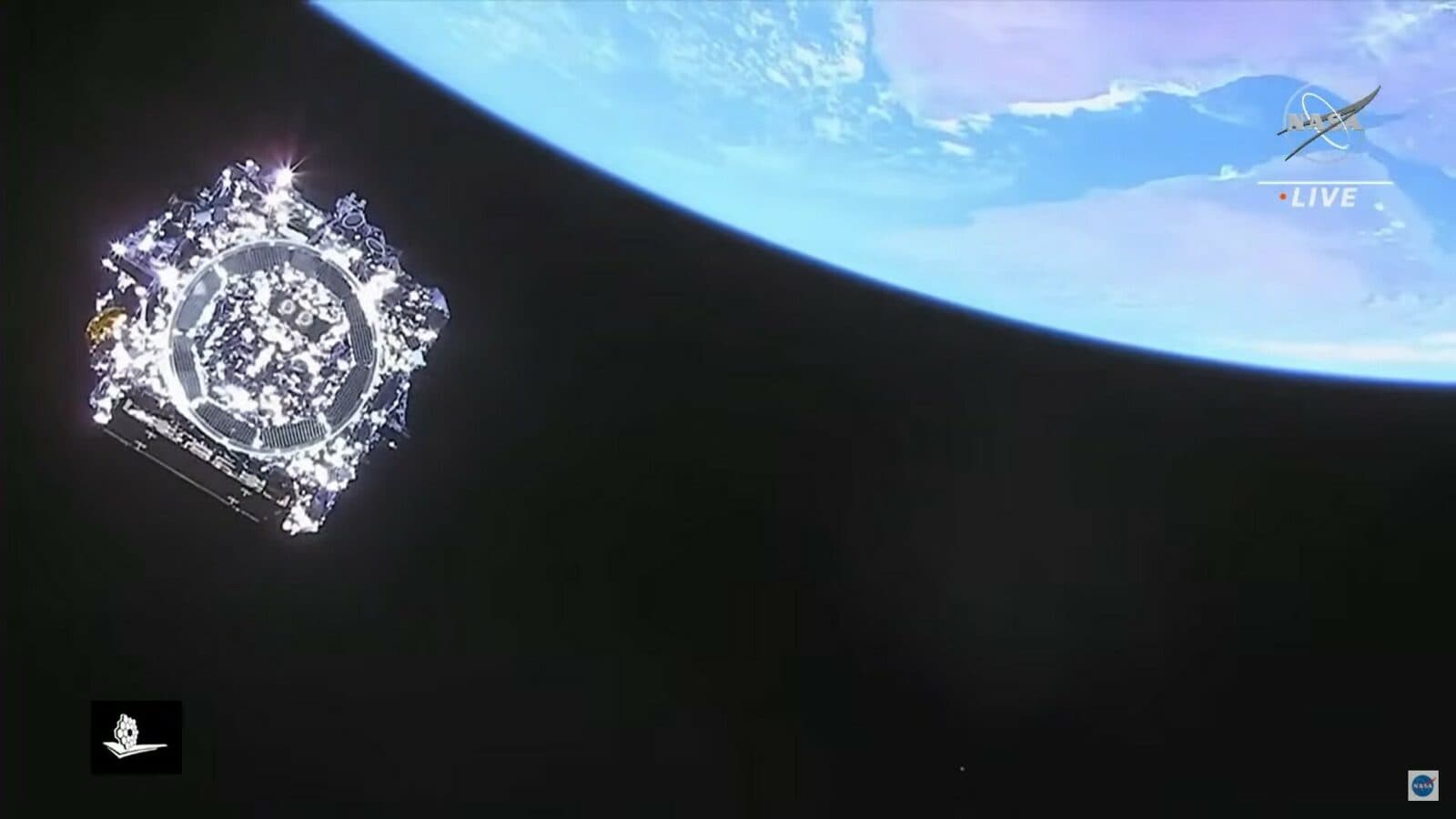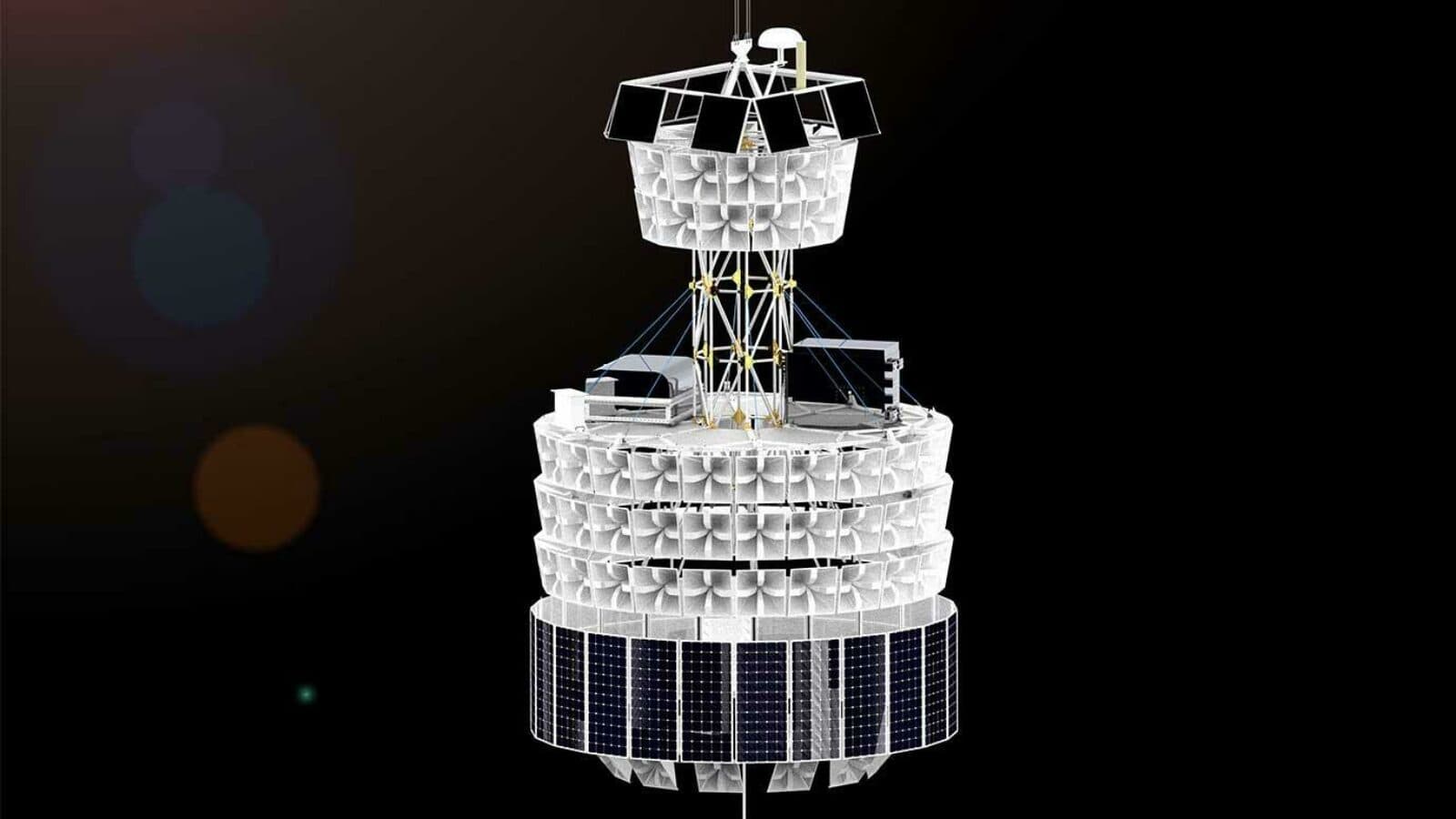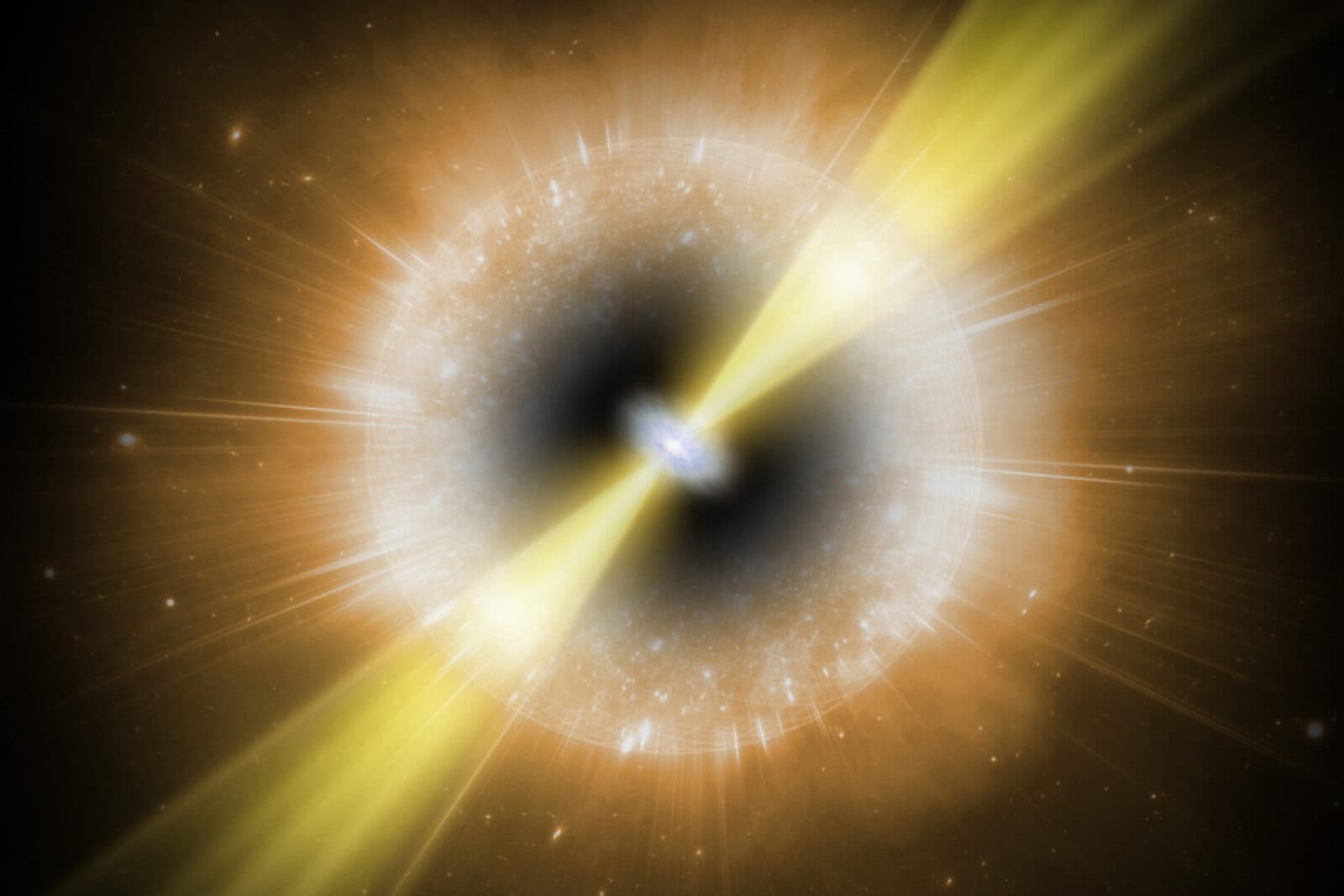With JWST, the Rubber Hits the Cosmic Road
by Adam Hadhazy
JWST begins to assemble itself and undergo commissioning out on the final frontier

The Author
Sweet success! After a challenging quarter-century of development and construction, JWST finally went aloft in late December 2021 and, as of this writing, is going through its deployment beautifully. A flagship astrophysics mission, JWST is set to give us our deepest, most detailed look back into cosmic history. Before the fun begins, though, a long list of commissioning tasks must be executed, and some of the biggest tasks have already been knocked out. Two such major items included the unfurling of the spacecraft's tennis court-sized sunshield and the locking into place of JWST's folding, 6.5-meter-diamater primary mirror—both of which went off without a hitch in recent weeks. Also as of late January, the telescope had completed voyaging out to its science operations location about a million miles from Earth called the L2 point, a place the gravity of the Earth and sun balance out. Over the next several months now, mission staff will remotely adjust the 18 individual segments of that primary mirror via tiny motors called actuators in order to align the optics system correctly. Once all that's done, the first science images should start coming in over the summer. The expectation is that JWST will prove to have been well-worth the wait for thousands of scientists around the world, including many Kavli astrophysics institute-affiliated researchers.
Investigating the Milky Way's history of galactic violence
Our Milky Way Galaxy has evidently had a long history of galactic dustups over the eons. Some 50 small satellite galaxies orbit our Milky Way today, with some in various stages of upheaval thanks to having gravitationally interacted with the big kid on the block, us. The Milky Way has taken its own share of licks in the process, though, observable as drawn-out streams of stars and other structures observable throughout our galaxy's disk and spiral arms. A former member of the Kavli Institute for the Physics and Mathematics of the Universe (Kavli IPMU) led a recent study that has now unveiled more of these Milky Way substructures that speak to a history of galactic violence, as it were. The study described newfound coherently rotating filaments of stars at the edge of the Milky Way's disc. The plan moving forward is to gather detailed observations of the stars in these structures to infer the stars' ages. Doing so will further piece together our Galaxy's tumultuous cosmic relationships with its neighbors.
Going back, back, back with JWST
Count numerous members of the Kavli Institute for Cosmological Physics (KICP) at the University of Chicago among the scientists champing at the bit to get to work using JWST. Some of JWST's initial observations will deliver data to teams with KICP members eager to glimpse the first stars and galaxies the universe ever produced. JWST is expected to be able to peer back to perhaps just 100 million years after the Big Bang, or about four times farther than the Hubble Space Telescope has ever been able to delve. Other key questions JWST will help KICP members answer concern the expansion rate of the universe and what exactly happens when two neutron stars collide.

New observatory to leverage the Antarctic ice cap as a neutrino dragnet
KICP researchers can also look forward to poring over data gathered from another new instrument, though instead of plying space, this observatory will float above Antarctica on a balloon. Known as PUEO (Payload for Ultrahigh Energy Observations), the instrument will seek signatures of the highest-energy neutrinos in the universe. Neutrinos are ghostly particles that zip right through other matter. Although ghostly, neutrinos are also incredibly abundant, clocking in as the second-most abundant particle in the universe after photons (light). Given this abundance, when a suitably large collecting area of matter is presented, very rare interactions of neutrinos with matter can be witnessed. In the case of PUEO, the collecting area is the ice of Antarctica itself. PUEO will stare down from an altitude of 120,000 feet, surveying a vast stretch of this pristine ice for telltale signals of impacts from hyper-velocity neutrinos. The particles are valuable messengers from cosmic events because neutrinos can make it all the way to Earth unhindered by the gases, solid bits, and electromagnetic charges that attenuate and affect other cosmic messengers such as light and cosmic rays. Theorists should have a field day sorting out which kinds of astrophysical events could plausibly give rise to neutrinos with certain tremendous energies. KICP researchers expect PUEO to start gathering up this desired data in late 2024.

Unraveling the origins of a stunningly strong cosmic kablooie
Astrophysicists have been having a cow, so to speak, over the Cow, an extremely powerful blast of light witnessed in 2018. (The amusing nickname comes from the serendipitous formal designation of the event as AT2018cow.) Some 100 times brighter than a typical core collapse supernova, when a mammoth star caves in on itself and detonates, the Cow has perplexed researchers ever since it first burst onto the scene. Now scientists at the Kavli Institute for Astrophysics and Space Research at the Massachusetts Institute of Technology have put forth new evidence that strongly constrains what the Cow might be. The NICER instrument, installed on the International Space Station, captured x-ray pulses emanating from the Cow every 4.4 milliseconds over a span of 60 days shortly after the Cow first appeared. This clockwork pattern of pulses, coupled with the fact that nothing can go faster than the speed of light, allows for calculations that the object producing the pulses must be no more than 1,000 kilometers in diameter while possessing a mass less than that of 800 suns. The finding confirms that a compact object — a neutron star or a black hole — remains at the center of the Cow. That, in turn, points to the overall event as having likely been the result of the collapse of a rare, ultra-hefty star.
Honing the ways we measure distortions to galaxies' shapes
In an explainer, Jamie McCullough — a Ph.D. student at the Kavli Institute for Particle Astrophysics and Cosmology at Stanford University — walks the reader through how measuring slight distortions to the shapes of galaxies can reveal the broader structure and compositions of the universe. Astrophysicists and cosmologists are continuing to hone their understanding of why given groups of galaxies are just randomly oriented with respect to one another. Effects such as the bending of light by large concentrations of matter, as well as how galaxies interact within their grouping, influence the galaxies' shapes when seen by us here on Earth. Accounting for the nuances of galaxy shape-distorting factors will be increasingly important in achieving ever-more precise descriptions of how matter — especially dark matter — is distributed. A new paper by the Dark Energy Survey (DES) Collaboration, of which McCullough is part, describes progress in these careful calibration efforts with DES data. DES, a project with major Kavli astrophysics institute involvement, gathered observations between 2013 and 2019. Researchers are still poring over its voluminous galactic catch to refine models of what our universe is made of and how the universe evolved to its present state.